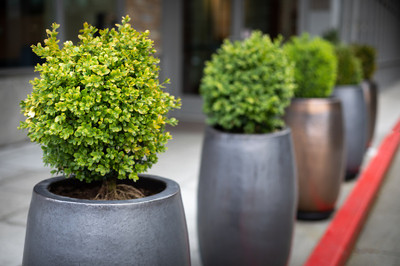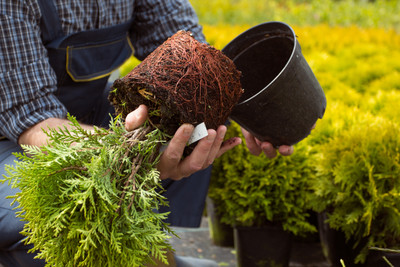Bringing Nature into Classrooms: Inspiring Biophilic Design in Schools
Posted by Jason Wyrwicz on Oct 1st 2025
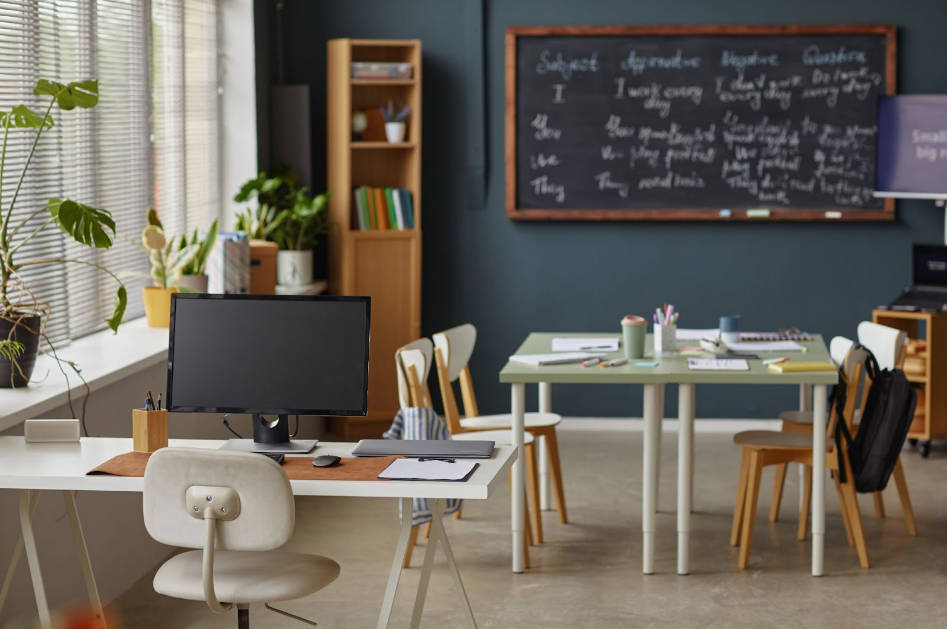
Imagine walking into a school where you’re welcomed by walls filled with pictures and hallways with planters of greenery. Your mood instantly changes from thinking about a busy day ahead to a more calming sense of balance, focus, and connection with the space around you.
Classrooms feel more alive and filled with fresh air than ever before. Students seem quieter and even more focus - not because they are told to, but because the space itself feels calming.
This is not a dream but a well-planned bilophilic design incorporated into a school environment.
This article will explore the power of biophilic design in schools and how you can achieve it without breaking the bank.
Why Biophilic Design Matters in Schools
Let’s start with the basics. A biophilic design for schools is the strategy of integrating nature into the built environment. In other words, it means adding more greenery and natural light to improve the mental and physical well-being of people around.
Something as simple as placing a few planters with a Spider plant, aloe vera, or even cacti can go a long way.
|
Students |
Teachers |
Schools |
|
Calmer, less stress |
Reduced burnout |
Stronger image & appeal |
|
Kinder behavior |
Brighter, more comfortable classrooms |
Lower costs, more sustainable |
|
Better focus & memory |
Builds community connections |
|
|
Higher academic outcomes |
Benefits of Biophilic Design for Students
Adds a Calming Sense
Green, earthy, and blue colors of natural elements are often associated with calming effects on students and can even enhance natural light in the rooms where they are placed.
Plus, if your students experience stress before the tests or exams, the presence of nature can reduce the anxiety level and mental fatigue.
To back this fact, one study was conducted at Aarhus University, showing that children who grow up with greener surroundings have a 55% lower risk of developing mental disorders in the future.
Promotes Prosocial Behavior
If students at your school struggle with misbehavior, introducing natural elements into the environment can help promote calmer, more positive behavior.
Redesigning the hallway and classrooms to mimic nature may help reduce the number of conflicts and promote kinder relationships between students.
Obviously, it doesn’t mean turning your school into a jungle, but placing small trees and foliage around would likely show results.
Improves Memory and Attention
Simply being surrounded by nature-inspired visuals, such as repeating geometric patterns or images of the natural world, has been shown to boost memory and attention.
Classrooms designed with biophilic principles also nurture creativity and healthier overall development, tapping into our natural connection to the outdoors.
Better Academic Outcomes
Greenery is not the only thing that can boost your students’ overall performance. Classrooms filled with natural daylight have been consistently linked to stronger academic performance.
Students working in well-lit environments tend to achieve higher test scores, demonstrate better focus, and even remain more engaged throughout the day.

Benefits of Biophilic Design for Teachers
Students aren’t the only ones benefiting from biophilic designs. Teachers are also positively affected by the added greenery in their workplaces:
Reduced Burnout
Teaching can be stressful, but working in environments filled with plants and natural elements can help support mood and reduce stress.
Exposure to greenery has been shown to calm the mind, improve emotional well-being, and create a more balanced, restorative work environment.
More Comfortable Classrooms
Classrooms that include fresh air, ample daylight, and natural elements are simply more pleasant to work in, aren’t they? Even a small planter with a pretty flower can set a mood for the whole day.
All these features can improve energy levels, focus, and comfort for teachers, making it easier to maintain engagement throughout the day.
A well-designed and nature-inspired space supports both teacher and student well-being, creating a positive cycle of productivity and calm.
Benefits of Biophilic Design for Schools
Introducing a biophilic design in schools does not mean changing the building from scratch. As long as empty corners, consoles, and desks could benefit from a bit of greenery, you can keep the upgrade within your budget.
Enhanced School Image and Appeal
A campus that incorporates greenery and nature-inspired design sends a powerful message about the school’s values. It signals care, innovation, and a genuine commitment to student wellness.
Just think about parents or potential investors coming into your school and seeing how different it is from other traditional design schools they’ve seen so many times.
Sustainability and Cost Benefits
Thoughtful design choices, such as maximizing daylight, using natural ventilation, and integrating energy-efficient materials, can significantly reduce energy consumption and long-term maintenance costs.
Schools benefit not only financially but also environmentally, creating a campus that is both sustainable and practical.
Stronger Community Connections
Outdoor gardens, courtyards, and shared green spaces invite engagement beyond the classroom. These areas encourage community use, parent involvement, and hands-on environmental education.
By connecting students, staff, and the wider community to nature, schools can foster a sense of shared purpose and pride in their campus.
Core Elements of Biophilic Design in Schools
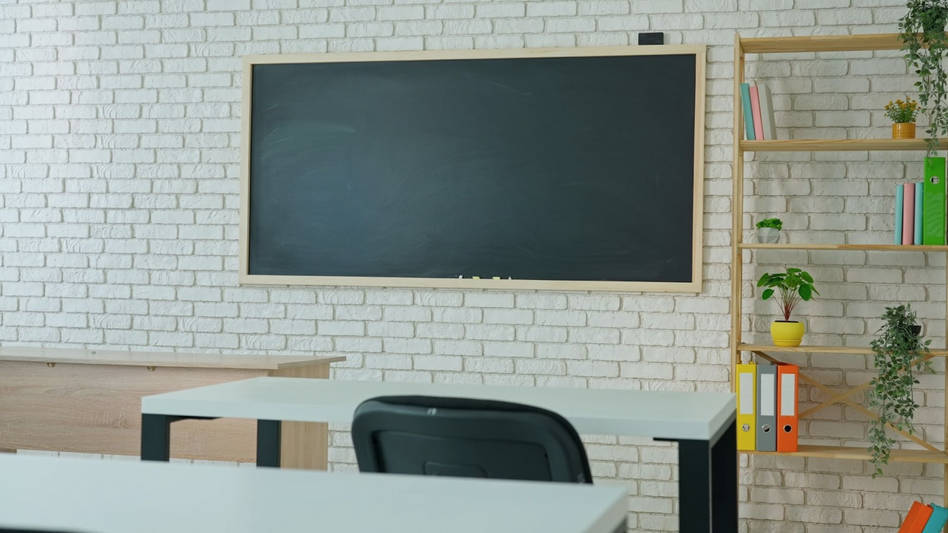
If you’re thinking of introducing a biophilic design in your school, you’re going in the right direction.
There are three main ways you can connect your building with nature:
- Direct (real plants, natural light, fresh air, etc.)
- Indirect (natural materials, textures, colors, patterns, etc.)
- Spatial (courtyards, atriums, flexible classrooms, etc.)
Each layer helps students and teachers feel more engaged, calm, and inspired in their environment.
1. Direct Connections to Nature
If your school is on a tight budget, the direct approach is the way to go.
These are the most obvious ways to bring nature inside. They include elements you can see, touch, or even smell.
Here’s what you can do:
- Add indoor plants in classrooms and corridors to bring life and greenery inside.
- Incorporate green walls for visual interest and a natural feel in hallways.
- Design classrooms that open directly onto gardens for a seamless indoor-outdoor connection.
- Use windows and skylights to provide views of trees, lawns, or other natural landscapes.
- Ensure fresh air and cross-ventilation through operable windows to improve comfort and focus.
- Include occasional water features or natural materials such as wood and stone to enhance sensory richness and create a calming environment.
2. Indirect Connections
Even when living elements aren’t possible, schools can foster a natural atmosphere through design choices. This method may require you to make some changes in your school’s design, but overall, it will be done for the better:
- Use natural color palettes such as greens, browns, and warm earth tones to create a soothing environment.
- Incorporate organic shapes and patterns, like leaf motifs and flowing curves, to reflect forms found in nature.
- Add varied textures through materials like wood grains, stone surfaces, and woven fabrics for tactile interest.
- Include natural materials such as cork, bamboo, clay, and soft stone to reinforce a grounded, nature-inspired feel.
3. Spatial Dynamics and Layout
Ideally, biophilic design should be considered at the early stage of building the school. But even when your school is already operational, you can implement some changes during the summer holidays.
Here are some ideas for what you can do to the layout of your school:
- Use courtyards, atriums, and open layouts to bring daylight and natural views inside.
- Design flexible spaces that blur the line between indoor and outdoor areas.
- Plan paths, sight lines, and layered views to guide movement and focus naturally.
- Create dedicated zones for quiet reflection, collaborative learning, and active engagement to support both focus and freedom for students and teachers.
Practical Implementation Guide
Depending on the budget of your school, we’ve prepared three tiers that break down the changes you can implement to achieve a balanced biophilic design.
Tier 1: Low-Cost Changes
- Add potted plants and planters in classrooms, hallways, and teachers’ offices.
- Maximize natural light: clear window obstacles, use sheer curtains.
- Hang nature-inspired artwork or posters.
|
Pro Tip: Start with high-traffic, visible zones like entrances, corridors, and libraries. |
Tier 2: Mid-Range Investment
- Install wall-mounted planters or vertical green walls (mind the height so that student don’t bump their heads accidentally).
- Create indoor plant “stations” or mobile planters on wheels.
- Improve ventilation systems or add operable windows.
- Develop outdoor learning corners or courtyard seating with planters.
- Use light shelves or skylights to bring daylight deeper inside.
|
Pro Tip: Use native or resilient plant species suited to your climate. This will reduce maintenance and stress on the system. |
Tier 3: Large-Scale Transformation
- Build courtyards, rooftop gardens, or integrated school gardens
- Redesign wings or corridors to open to nature
- Create net-zero or sustainable school buildings with integrated landscaping
- Integrate water features, outdoor classrooms, or nature trails
Real-Life Example of Biophilic Design in a School
If you’ve been wondering whether any school actually incorporates the biophilic design, the answer is yes!
Here are some of the prominent examples:
- Ecokid Kindergarten, Vietnam
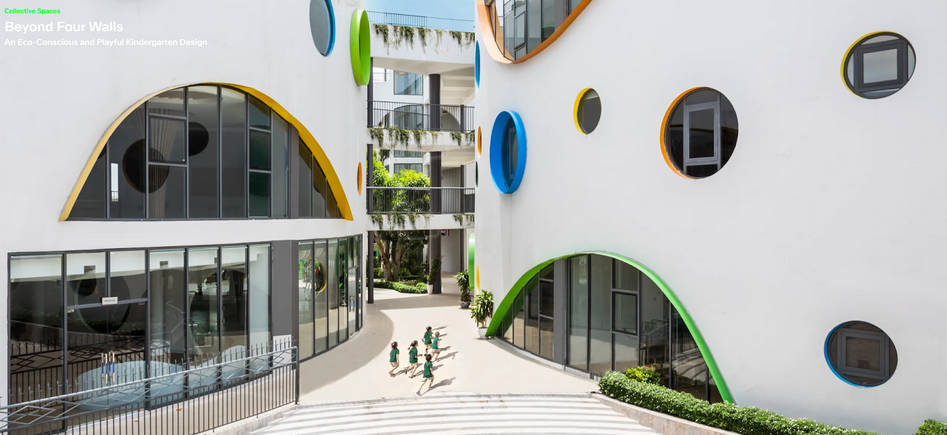
Designed by LAVA, this is a nature-inspired kindergarten near Hanoi.
As you can see, it masterfully integrates semi-circular buildings, bridges, and outdoor play spaces to keep nature always in view.
Curved forms and organic interiors create a playful, less formal environment for both children and staff.
- Kakapo Creek Early Learning Centre, New Zealand

Built in Auckland, Kakapo Creek is a unique example of how biophilic design can be integrated into schools.
It features an open-roofed central courtyard, natural ventilation, and ample daylight, connecting indoor and outdoor areas.
Biophilic elements like plants and water enhance children’s well-being, productivity, and environmental awareness while reducing the building’s energy impact.
- University of Chicago Student Wellness Center, USA
Completed in 2022, the Wellness Center merges health, counseling, and wellness services into a biophilic structure.
Green spaces, plants, and careful light design create a calming atmosphere, boosting student wellness, focus, and productivity.
How to Measure Success
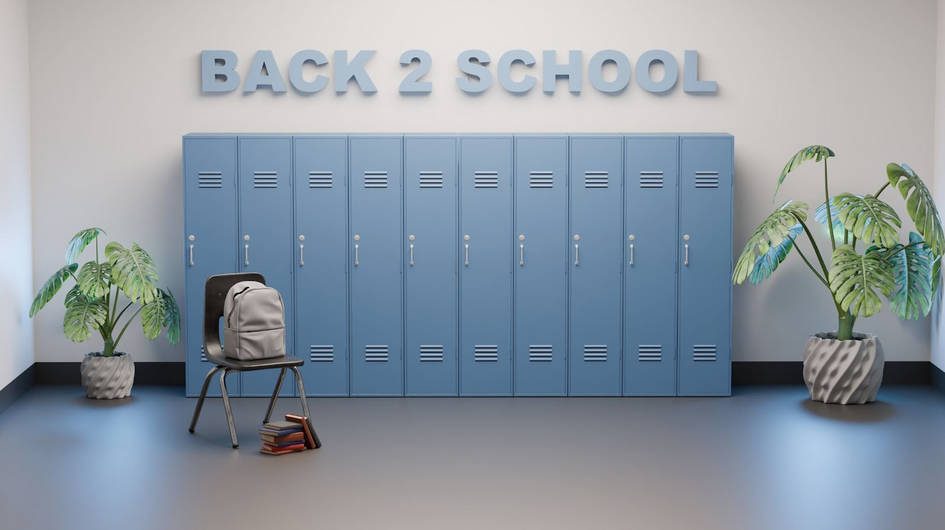
Once you add biophilic design elements to your school, you can track how well your students perform over time. It may not be a drastic change overnight, but there will be signs.
Here is how you can track the changes:
- Student performance metrics
See if there are any changes in how students pass tests, and ask teachers whether they have noticed any improvements in memory and focus.
- Behavioral, attendance, and discipline data
Over time, you should see fewer conflicts, fewer disciplinary incidents, and improved attendance. These positive shifts can provide a clear picture of how overall school performance is steadily improving.
- Teacher retention and satisfaction surveys
By gathering teacher feedback, you will start to see whether staff feel calmer, more supported, and more engaged in their work. Surveys can also reveal if new applicants are drawn to your school’s environment and if current teachers are more energized and motivated to stay long term.
Final Thoughts
Bringing nature into classrooms through biophilic design for schools is more than a trend. It’s a commitment to healthier, more creative, more resilient learning environments.
With evidence-based benefits ranging from improved student focus to teacher wellbeing to long-term sustainability, every school can begin the journey.
Best of all, you can do it with one planter, one window, one courtyard at a time.
|
If you're a teacher, administrator, or designer, why not start with something simple? Browse our lightweight and durable fiberglass planters to get started. Feel free to reach out for help choosing plants suited to school environments. Let’s grow together. |


